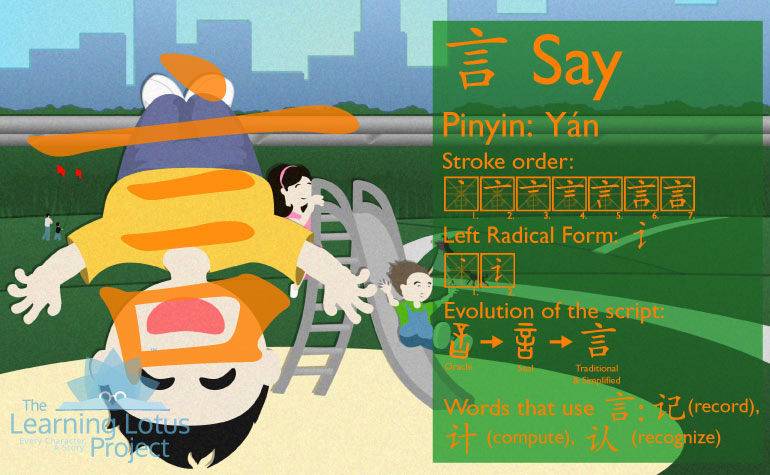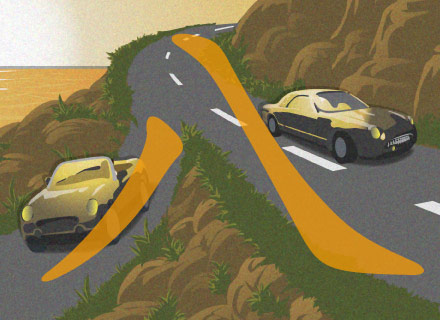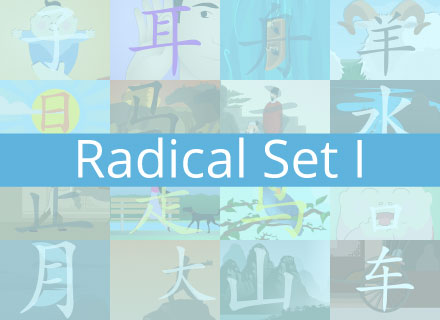言 Yán 
An ancient Chinese belief states that a person speaks the truth only when hanging upside down, which helps explain why the character "言" is a pictograph of a person hanging upside down. The Oracle Bone form and Seal form of this character clearly illustrates this ancient belief.
 When 言 is used as a radical, it is written in its alternate radical form: 讠 and is only used on the left-side of the character such as: 记 (record), 计 (compute), and 认 (recognize).
When 言 is used as a radical, it is written in its alternate radical form: 讠 and is only used on the left-side of the character such as: 记 (record), 计 (compute), and 认 (recognize).
"To Speak", the original meaning of 言, is retained in many idioms today. One such idiom is: 良言一句三冬暖, 恶言一句六月寒. "Liáng yán yī jù sān dōng nuǎn, è yán yī jù liù yuè hán." (Speaking with words of kindness creates warmth during the coldest days, speaking with harsh words creates coldness during the hottest months). The Chinese philosopher and poet Laozi said: 信言不美, 美言不信. "Xìn yán bù měi, měi yán bùxìn." (True words are not always pretty, pretty words are not always true); meaning the truth may not always be spoken beautifully, and beauitful words may just be empty rhetoric.
- Vocabulary:霅 Zhà | "Sound of Surging Rain", 认 Rèn | "Admit, Know, Understand"
- Category:Radical, Word
- Formation Method:Pictograph































